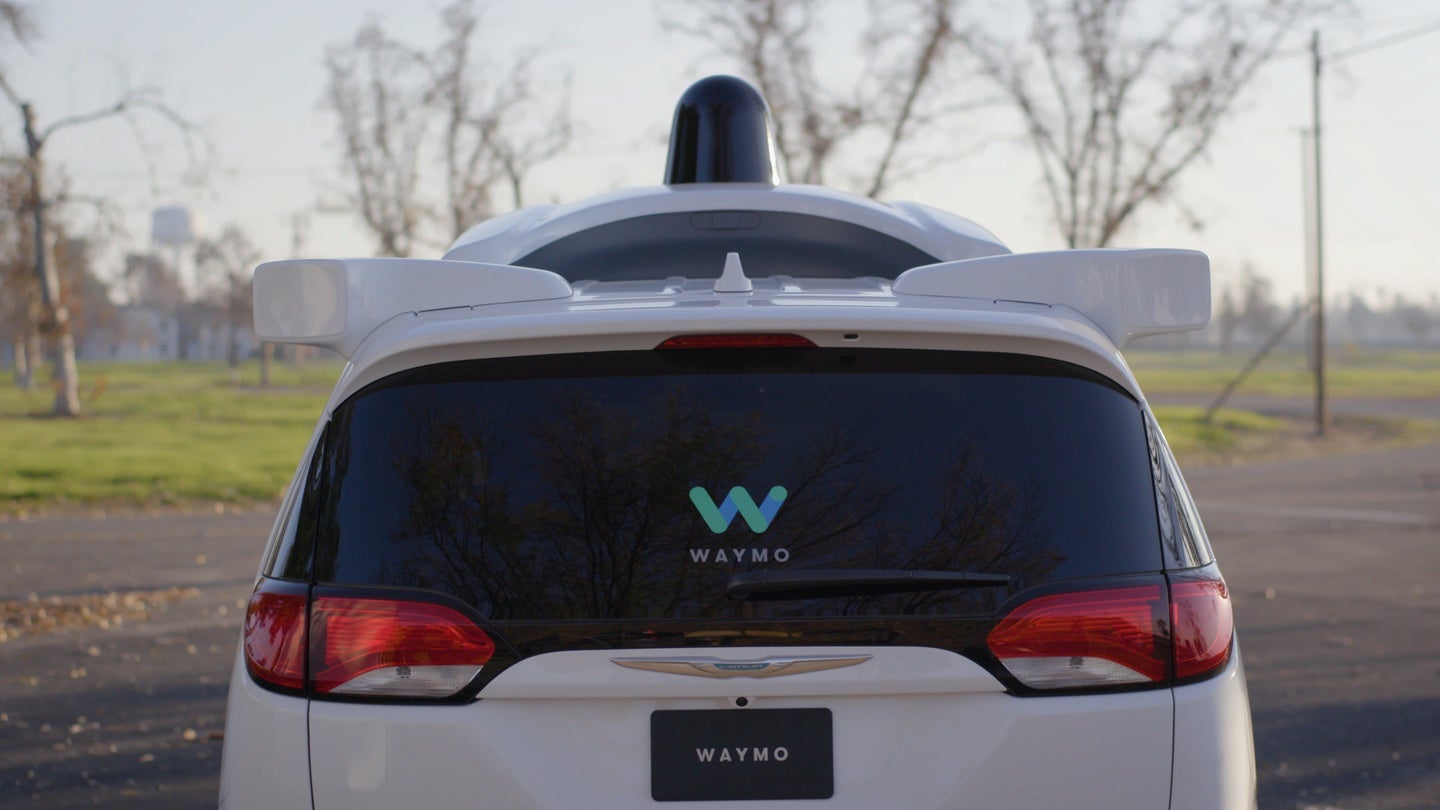Waymo Patents Cushioned Self-Driving Car to Protect Pedestrians
Exterior panels could soften if a collision is detected.

Self-driving cars may be less likely to crash into each other, but that doesn't mean pedestrians and cyclists will stop running into them. Waymo appears to believe the solution to this problem is to make cars softer. The Alphabet-slash-Google self-driving car project recently patented a design for what amounts to pedestrian-protecting exterior padding.
The patent, first spotted by The Mercury News, describes "tension members" that could slacken or tighten to adjust a car's "external rigidity." If the car detects an imminent collision with a pedestrian, the "tension members" could slacken to soften the blow.
"For example, if it is determined that a bicyclist is about to strike the hood and front bumper of the vehicle, the tension may be reduced for the tension members associated with the hood and front bumper, so as to reduce the rigidity of those surfaces," the patent filing said.
Automakers already incorporate crush zones into the hoods of cars to meet European pedestrian-safety standards, but Waymo's concept takes things to a whole new level. The "tension members," which could be based on cables, rods, or springs, could essentially turn any part of a car from a rigid surface into an amorphous, cushioned mass that could help to minimize the injuries sustained in an impact with a squishy human being.
Nonetheless, it's worth noting that a patent filing doesn't equate to a workable concept. A patent only confirms that an idea is original—not that it could actually work in the real world. Waymo has not publicly discussed plans to commercialize this novel idea, or even test it. So don't plan on being able to jump in front of self-driving cars with impunity.
